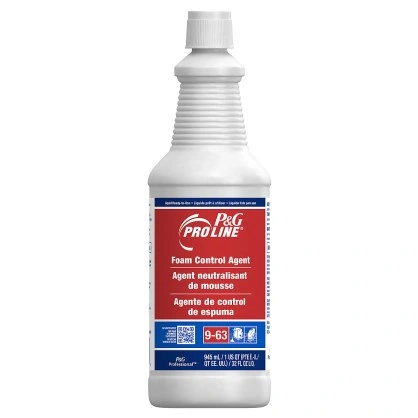Maximizing Product Quality Through Effective Foam Control Strategies
Maximizing Product Quality Through Effective Foam Control Strategies
Blog Article
Recognizing the Value of Foam Control in Industrial Processes
In commercial processes, foam control is often an ignored yet important facet that directly influences functional efficiency and item integrity. The visibility of excessive foam can lead to substantial challenges, consisting of disrupted blending and diminished response kinetics, which may eventually influence product top quality across numerous sectors such as drugs and food manufacturing.

The Function of Foam in Industry
Foam plays a substantial role in numerous industrial procedures, affecting both efficiency and item high quality. In sectors such as food and drink, pharmaceuticals, and petrochemicals, foam can offer both destructive and useful objectives. In the food industry, foam stablizing is crucial during procedures like whipping cream or producing beer, where the top quality of foam directly affects customer assumption and product attributes.
In chemical production, foam can serve as a barrier, protecting against the proper mixing of reagents, which can cause suboptimal returns and insufficient responses. Conversely, in processes like flotation in mineral handling, foam is made use of to divide important minerals from waste material, improving recuperation prices.
Moreover, in wastewater treatment, foam formation can suggest the existence of natural issue, acting as a vital parameter for process tracking. The capability to manage foam is crucial for keeping procedure security and optimizing operational costs. Understanding the role of foam in industrial applications allows engineers and operators to apply effective foam management strategies, ensuring that foam contributes positively to total procedure efficiency while lessening its prospective disadvantages.
Typical Difficulties of Foam Formation
Many industries face substantial obstacles as a result of the unintentional development of foam during numerous processes. Foam can interfere with the performance of procedures, bring about boosted downtime and greater operational costs. In fields such as drugs, food and beverage, and wastewater treatment, foam can prevent blending, decrease product return, and complicate separation procedures.
Additionally, foam can produce safety threats by blocking clear visibility, which is critical in settings where exact measurements and surveillance are needed. The presence of foam can additionally cause equipment damage, as excessive stress accumulation might occur in containers and reactors.
In addition, the requirement for regular intervention to take care of foam can divert sources and labor, eventually influencing efficiency. Ecological guidelines pose one more challenge, as extreme foam can lead to non-compliance problems in effluent discharge, necessitating extra therapy processes.
Effect On Product High Quality

In chemical production, foam can prevent reaction kinetics by limiting gas-liquid call, resulting in insufficient responses and lower yields. This not just impacts the effectiveness of manufacturing but can also cause second-rate final result that do not meet regulatory requirements or consumer requirements.
Furthermore, in pharmaceuticals, foam development throughout solution procedures can introduce air bubbles into sensitive compounds, jeopardizing medicine efficiency and security. In addition, foam can cause operational issues such as overflow and devices malfunctions, boosting downtime and upkeep prices, better influencing item top quality and consistency.
Strategies for Effective Foam Control
Dealing with the difficulties positioned by foam is crucial for preserving product high quality across various industrial industries. Effective foam control techniques are important to reduce the unfavorable effects of foam formation, which can disrupt procedures and concession item stability.
One of the primary strategies entails the option and application of proper antifoaming representatives. These agents are designed to reduce surface area stress and prevent bubble formation, and their performance can differ based on the particular process problems. Routine monitoring of foam levels is critical to make certain prompt intervention, permitting drivers to use antifoaming agents before foam ends up being a significant concern.
Additionally, optimizing procedure specifications such as temperature and agitation can play an essential duty in foam monitoring. Decreasing agitation strength or adjusting feed prices can reduce foam generation. Implementing mechanical foam control tools, such as foam breakers or defoamers, can also give efficient solutions for high-foaming more applications.
Educating personnel on foam administration strategies and the relevance of maintaining ideal operating problems even more boosts foam control efforts. Foam Control. By using a combination of these methods, industries can successfully take care of foam, guaranteeing functional efficiency and preserving the top quality of their products
Future Patterns in Foam Monitoring
How will developments in innovation form the future of foam monitoring go now in industrial processes? The combination of man-made knowledge (AI) and equipment discovering will certainly change foam control strategies, enabling real-time tracking and adaptive actions to foam development. These modern technologies can assess historic information and functional criteria to forecast foam actions, enabling preemptive actions that boost procedure performance.
In addition, the growth of innovative foam control representatives, consisting of ecologically friendly and bio-based alternatives, is gaining traction. These innovations not just minimize foam yet likewise line up with sustainability goals, reducing the eco-friendly impact of industrial operations.
Automation will certainly additionally play an essential function, as automated foam control systems can enhance the dosage of defoamers based upon real-time dimensions, reducing waste and enhancing performance.
In addition, the fostering of IoT (Internet of Points) gadgets will promote smooth communication in between tools and foam control systems, making sure a holistic strategy to foam administration. (Foam Control)
Conclusion
Finally, reliable foam control is vital for optimizing commercial processes throughout different sectors. The obstacles positioned by foam development can considerably impact item quality and functional efficiency. Carrying out strategic foam monitoring techniques, consisting of the use of antifoaming representatives and procedure optimization, alleviates these obstacles. As markets remain to develop, recurring developments in foam control modern technologies will even more boost productivity and sustainability, making certain compliance with environmental laws while maintaining the stability of items.
In the food market, foam stablizing is critical during processes like whipping cream or creating beer, where the top quality of foam straight influences consumer perception and product qualities.
Comprehending the duty of foam in commercial applications permits engineers and operators to implement effective foam administration techniques, making sure that foam adds favorably to general procedure efficiency while lessening its prospective downsides.
Normal surveillance of foam degrees is vital to make certain prompt treatment, enabling operators to apply antifoaming agents before foam comes to be a substantial concern.
Carrying out mechanical foam control gadgets, such as foam breakers or defoamers, can likewise offer effective services for high-foaming applications.
The integration of artificial knowledge (AI) and equipment discovering will certainly transform foam control techniques, enabling real-time surveillance YOURURL.com and flexible actions to foam formation.
Report this page